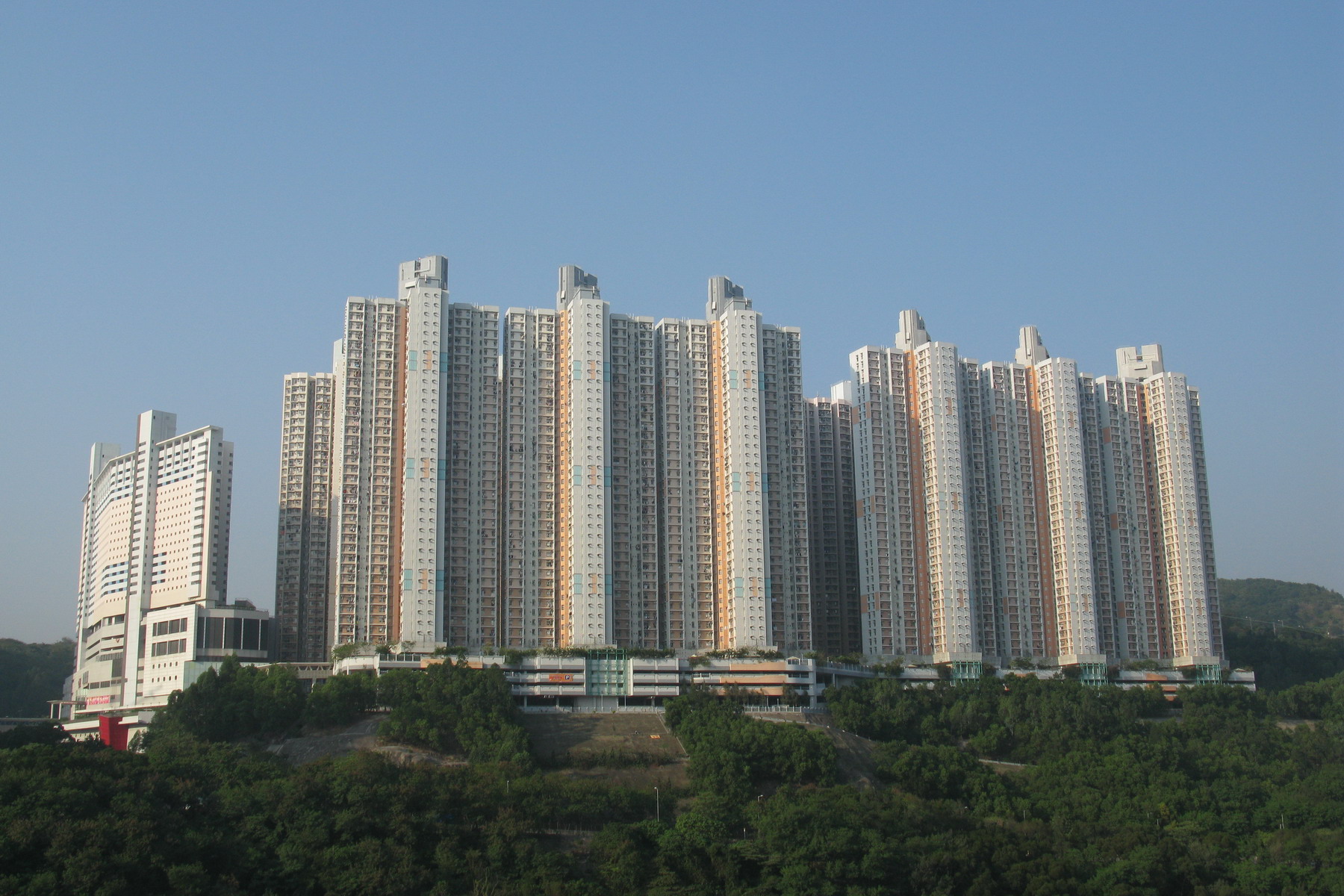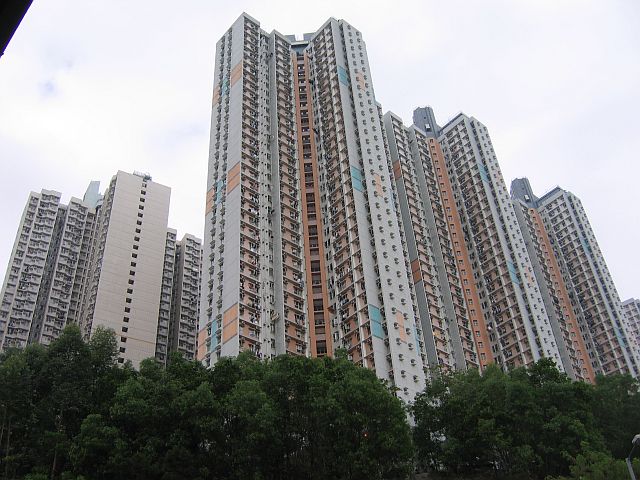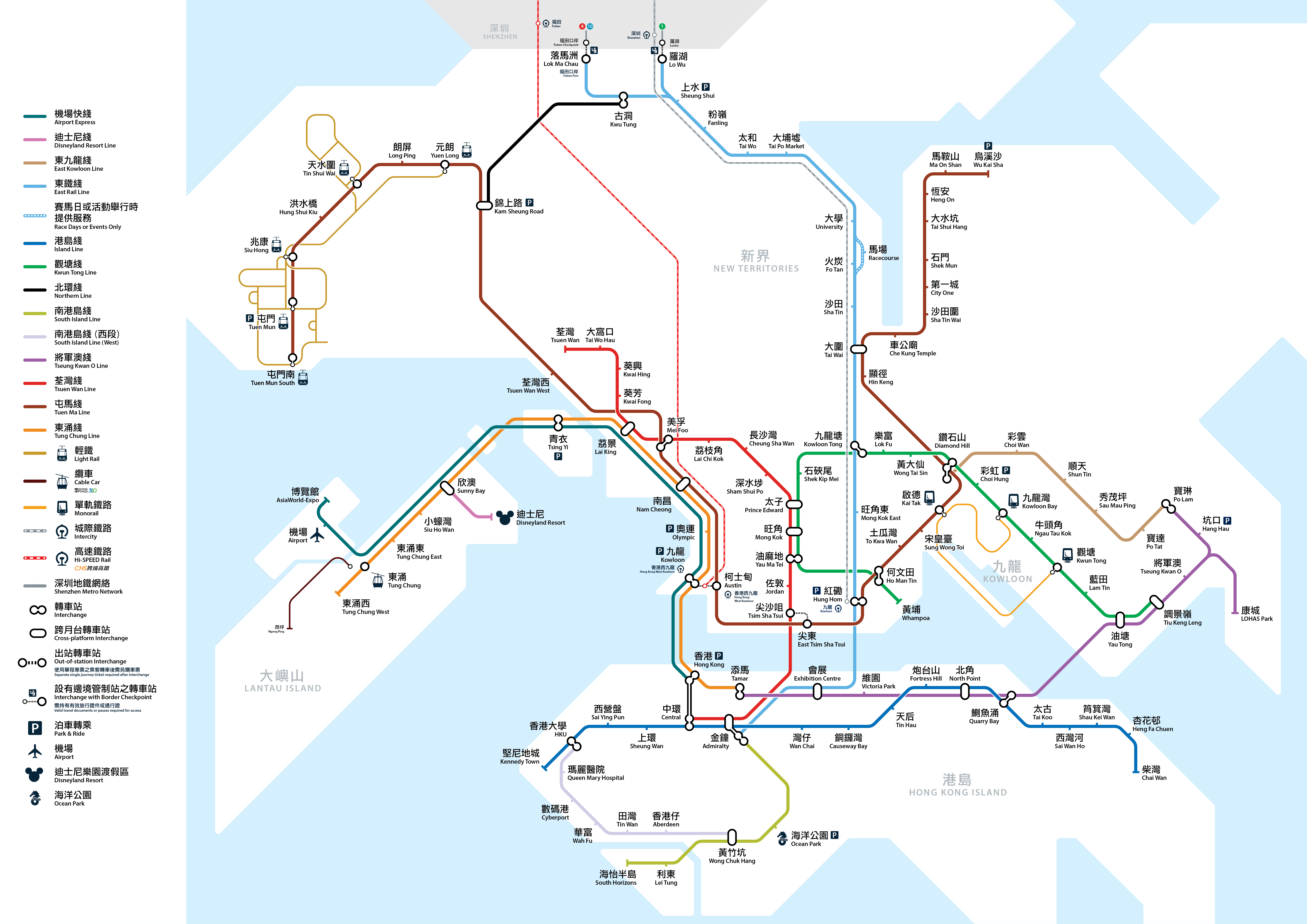|
Po Tat Estate
Po Tat Estate (), formerly called Po Lam Road Housing Development (), is a public housing estate at the junction of Po Lam Road and Sau Mau Ping Road in Sau Mau Ping, Kwun Tong, Kowloon, Hong Kong, near Sau Mau Ping Estate and Tseung Kwan O Tunnel. It consists of 13 blocks and a shopping centre. In 2016, it housed a population of 24,642. A Monkey God Temple is located at Po Tat Estate. The Monkey King Festival is celebrated there. Background Before Po Tat Estate was constructed, the site was a cement plant and part of the Anderson Road and Po Lam Road were laid on there. Its Phase 1, 2 and 4 consists of 6 blocks and a shopping centre completed in 2001. Another six blocks originally belonged to a HOS estate, Hiu Lam Court (), but they were transferred to rental housing and occupied in 2003. Houses Demographics In the 2016 by-census, Po Tat Estate recorded a population of 24,642. There were 7,391 households and an average household size of 3.3 persons. Transport At p ... [...More Info...] [...Related Items...] OR: [Wikipedia] [Google] [Baidu] |
Po Tat Estate
Po Tat Estate (), formerly called Po Lam Road Housing Development (), is a public housing estate at the junction of Po Lam Road and Sau Mau Ping Road in Sau Mau Ping, Kwun Tong, Kowloon, Hong Kong, near Sau Mau Ping Estate and Tseung Kwan O Tunnel. It consists of 13 blocks and a shopping centre. In 2016, it housed a population of 24,642. A Monkey God Temple is located at Po Tat Estate. The Monkey King Festival is celebrated there. Background Before Po Tat Estate was constructed, the site was a cement plant and part of the Anderson Road and Po Lam Road were laid on there. Its Phase 1, 2 and 4 consists of 6 blocks and a shopping centre completed in 2001. Another six blocks originally belonged to a HOS estate, Hiu Lam Court (), but they were transferred to rental housing and occupied in 2003. Houses Demographics In the 2016 by-census, Po Tat Estate recorded a population of 24,642. There were 7,391 households and an average household size of 3.3 persons. Transport At p ... [...More Info...] [...Related Items...] OR: [Wikipedia] [Google] [Baidu] |
Population
Population typically refers to the number of people in a single area, whether it be a city or town, region, country, continent, or the world. Governments typically quantify the size of the resident population within their jurisdiction using a census, a process of collecting, analysing, compiling, and publishing data regarding a population. Perspectives of various disciplines Social sciences In sociology and population geography, population refers to a group of human beings with some predefined criterion in common, such as location, race, ethnicity, nationality, or religion. Demography is a social science which entails the statistical study of populations. Ecology In ecology, a population is a group of organisms of the same species who inhabit the same particular geographical area and are capable of interbreeding. The area of a sexual population is the area where inter-breeding is possible between any pair within the area and more probable than cross-breeding with in ... [...More Info...] [...Related Items...] OR: [Wikipedia] [Google] [Baidu] |
Public Housing Estates In Hong Kong
This is a list of public housing estates in Hong Kong. Many of them are properties of Hong Kong Housing Authority (HKHA), while some of them are properties of Hong Kong Housing Society (HKHS). Central and Western District Sai Wan (Kennedy Town) Wan Chai District Tai Hang Eastern District Chai Wan and Siu Sai Wan Shau Kei Wan Quarry Bay and North Point Southern District Ap Lei Chau Aberdeen, Kellett Bay and Waterfall Bay Stanley Yau Tsim Mong District Yau Ma Tei Sham Shui Po District Cheung Sha Wan Sham Shui Po Shek Kip Mei Kowloon City District Hung Hom, To Kwa Wan, Ma Tau Wai Ho Man Tin Kai Tak development area Wong Tai Sin District Wong Tai Sin (Chuk Yuen) Diamond Hill Lok Fu (Lo Fu Ngam) and Wang Tau Hom Ngau Chi Wan Tsz Wan Shan Note: all the estates in Tsz Wan Shan, except Sha Tin Au Estate, have been rebuilt from former Tsz Wan Shan Estate, which was built in 1964 and demol ... [...More Info...] [...Related Items...] OR: [Wikipedia] [Google] [Baidu] |
Transport And Housing Bureau
The Transport and Housing Bureau (THB) was an agency of the Government of Hong Kong between 2007 and 2022, responsible for a range of policies such as the internal and external transportation, including air transport, land transport, maritime transport, logistics and housing development in Hong Kong. The bureau was headed by the Secretary for Transport and Housing (STH). The bureau was formed on 1 July 2007 to take over the transport portfolios previously under the purview of the Environment, Transport and Works Bureau, and the public housing portfolios of the Housing, Planning and Lands Bureau. On 1 July 2022, the THB was split up into the Transport and Logistics Bureau (TLB) and the Housing Bureau. Subordinate entities The bureau was divided into two branches, the Transport Branch and the Housing Branch. The following public entities are controlled by the bureau: Transport *Land and Waterborne Transport *Air Services *Maritime Transport *Logistics Development Housing ... [...More Info...] [...Related Items...] OR: [Wikipedia] [Google] [Baidu] |
East Kowloon Line
The East Kowloon line () is a proposed Hong Kong rapid transit line that would run from Diamond Hill to Tseung Kwan O New Town. The route would pass through the hilly Sau Mau Ping residential area, which is not directly served by any MTR, local railway service at present. The scheme was first revealed by the Hong Kong Government in the "''Railway Development Strategy 2014''", published September 2014. The transit scheme is related to government-led redevelopment of the East Kowloon area as well as planned residential development in the Anderson Road, Hong Kong, Anderson Road/Sau Mau Ping district. Overview The estimated construction cost of this line is highest among all seven railway plans proposed in the railway strategy due to the steep terrain along its alignment. The estimated cost is HK$27.5 billion (approximately US$3.5 billion) at 2013 prices, making it HK$3.5 billion (US$450 million) per kilometre for a 7.8 km system. It is recommended the line will begin constr ... [...More Info...] [...Related Items...] OR: [Wikipedia] [Google] [Baidu] |
Po Tat Station
Po Tat () is a proposed MTR station on the proposed . It will be located at Sau Mau Ping, Kwun Tong District, Kowloon Kowloon () is an urban area in Hong Kong comprising the Kowloon Peninsula and New Kowloon. With a population of 2,019,533 and a population density of in 2006, it is the most populous area in Hong Kong, compared with Hong Kong Island and t ..., Hong Kong. The station is still under planning. References Sau Mau Ping Proposed railway stations in Hong Kong MTR stations in Kowloon {{HongKong-railstation-stub ... [...More Info...] [...Related Items...] OR: [Wikipedia] [Google] [Baidu] |
Home Ownership Scheme
The Home Ownership Scheme (HOS) is a subsidised-sale public housing programme managed by the Hong Kong Housing Authority. It was instituted in the late 1970s as part of the government policy for public housing with two aims – to encourage better-off tenants of rental flats to vacate those flats for re-allocation to families in greater housing need; and also to provide an opportunity for home ownership to families unable to afford to buy in the private sector. Under the scheme, the government sells flats to eligible public housing tenants and to lower-income residents at prices below the market level, with discounts usually between 30 and 40 per cent. It restricts resale of the units in the second-hand market to other families who qualify or, on the open market, after payment of a premium equal to the updated value of the discount given on the original purchase. As an ancillary scheme, the Housing Authority also entered into arrangements with local private developers to provi ... [...More Info...] [...Related Items...] OR: [Wikipedia] [Google] [Baidu] |
Anderson Road, Hong Kong
Anderson Road is a road on the eastern border of the New Territories and New Kowloon in Hong Kong. It starts near the junction of Clear Water Bay Road and New Clear Water Bay Road, above Shun Lee Estate, then continues southeast to Tseng Lan Shue () and eastward through the hills above Sau Mau Ping, and finally ends at Po Lam Road () in Ma Yau Tong. Anderson Road Quarry To the east of the road is Tai Sheung Tok hill. From 1964, the hilltop was developed as a large quarry, Anderson Road Quarry (), highly visible from much of Kowloon and Hong Kong, which supplied construction aggregate to Hong Kong until July 2017, operated by the K.Wah Group, when it was one of only three quarries still operating in Hong Kong, along with those in Shek O and Lam Tei. The quarry site is on the ridge surrounding Kowloon, visible from much of urban Hong Kong, but was ultimately deemed to damage the beauty and the fungshui of Victoria Harbour. Planning for a major development of the 40-hectare ... [...More Info...] [...Related Items...] OR: [Wikipedia] [Google] [Baidu] |
Cement Plant
A cement is a binder, a chemical substance used for construction that sets, hardens, and adheres to other materials to bind them together. Cement is seldom used on its own, but rather to bind sand and gravel ( aggregate) together. Cement mixed with fine aggregate produces mortar for masonry, or with sand and gravel, produces concrete. Concrete is the most widely used material in existence and is behind only water as the planet's most-consumed resource. Cements used in construction are usually inorganic, often lime or calcium silicate based, which can be characterized as hydraulic or the less common non-hydraulic, depending on the ability of the cement to set in the presence of water (see hydraulic and non-hydraulic lime plaster). Hydraulic cements (e.g., Portland cement) set and become adhesive through a chemical reaction between the dry ingredients and water. The chemical reaction results in mineral hydrates that are not very water-soluble and so are quite durable in wate ... [...More Info...] [...Related Items...] OR: [Wikipedia] [Google] [Baidu] |
Monkey King Festival
The Monkey King Festival () is celebrated in Hong Kong on the 16th day of the eighth Lunar month of the Chinese calendar, corresponding to September according to the Common era calendar, a day after the Mid Autumn Festival. The origin of the festival is traced to the epic 16th century novel ''Journey to the West'' (Xiyou Ji, 西遊記) written by the Chinese novelist Wu Cheng'en (1500–1582) during the Ming Dynasty (1368–1644). The novel brings out the concept of immortality from Taoism and rebirth from Buddhism. The monkey Sun Wukong, a character in the novel, is the featured figure of the festival. Story The story has entered into annals of folklore in China. It revolves around Xuanzang, a Buddhist monk during the Tang Dynasty (618-907). Harassed by demons and bandits, he visits ancient India, accompanied by his disciples, and protectors, Sun Wukong the Monkey King, Pigsy (猪八戒) and Sandy (沙悟浄). They return to China with Buddhist scriptures. The novel's story be ... [...More Info...] [...Related Items...] OR: [Wikipedia] [Google] [Baidu] |
Sun Wukong
The Monkey King, also known as Sun Wukong ( zh, t=孫悟空, s=孙悟空, first=t) in Mandarin Chinese, is a legendary mythical figure best known as one of the main characters in the 16th-century Chinese novel ''Journey to the West'' ( zh, t=西遊記, s=西游记, first=t) and many later stories and adaptations. In ''Journey to the West'', Sun Wukong is a monkey born from a stone who acquires supernatural powers through Taoist practices. After rebelling against heaven, he is imprisoned under a mountain by the Buddha. After five hundred years, he accompanies the monk Tang Sanzang (唐三藏) and two other disciples on a journey to get back Buddhist sutras from the West (India), where Buddha and his followers dwell. Sun Wukong possesses many abilities. He has amazing strength and is able to support the weight of two heaven mountains on his shoulders while running "with the speed of a meteor". He is extremely fast, able to travel 108,000 li (54,000 km, 34,000 mi) in ... [...More Info...] [...Related Items...] OR: [Wikipedia] [Google] [Baidu] |
Shopping Centre
A shopping center (American English) or shopping centre (Commonwealth English), also called a shopping complex, shopping arcade, shopping plaza or galleria, is a group of shops built together, sometimes under one roof. The first known collections of retailers under one roof are public markets, dating back to ancient times, and Middle Eastern covered markets, bazaars and souqs. In Paris, about 150 covered passages were built between the late 18th century and 1850, and a wealth of shopping arcades were built across Europe in the 19th century. In the United States, the widespread use of the automobile in the 1920s led to the first shopping centers of a few dozen shops that included parking for cars. Starting in 1946, larger, open air centers anchored by department stores were built (sometimes as a collection of adjacent retail properties with different owners), then enclosed shopping malls starting with Victor Gruen's Southdale Center near Minneapolis in 1956. A shopping mall ... [...More Info...] [...Related Items...] OR: [Wikipedia] [Google] [Baidu] |







